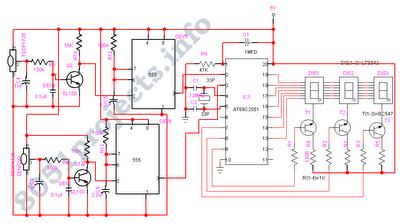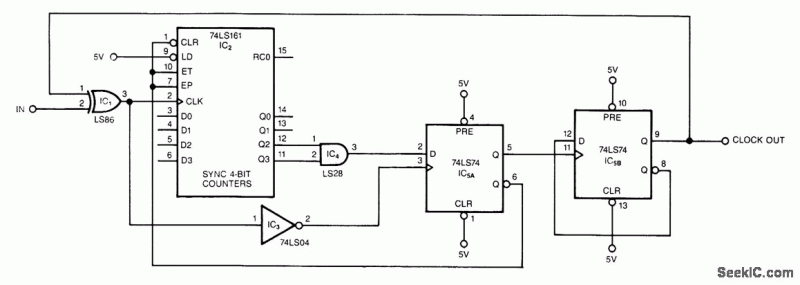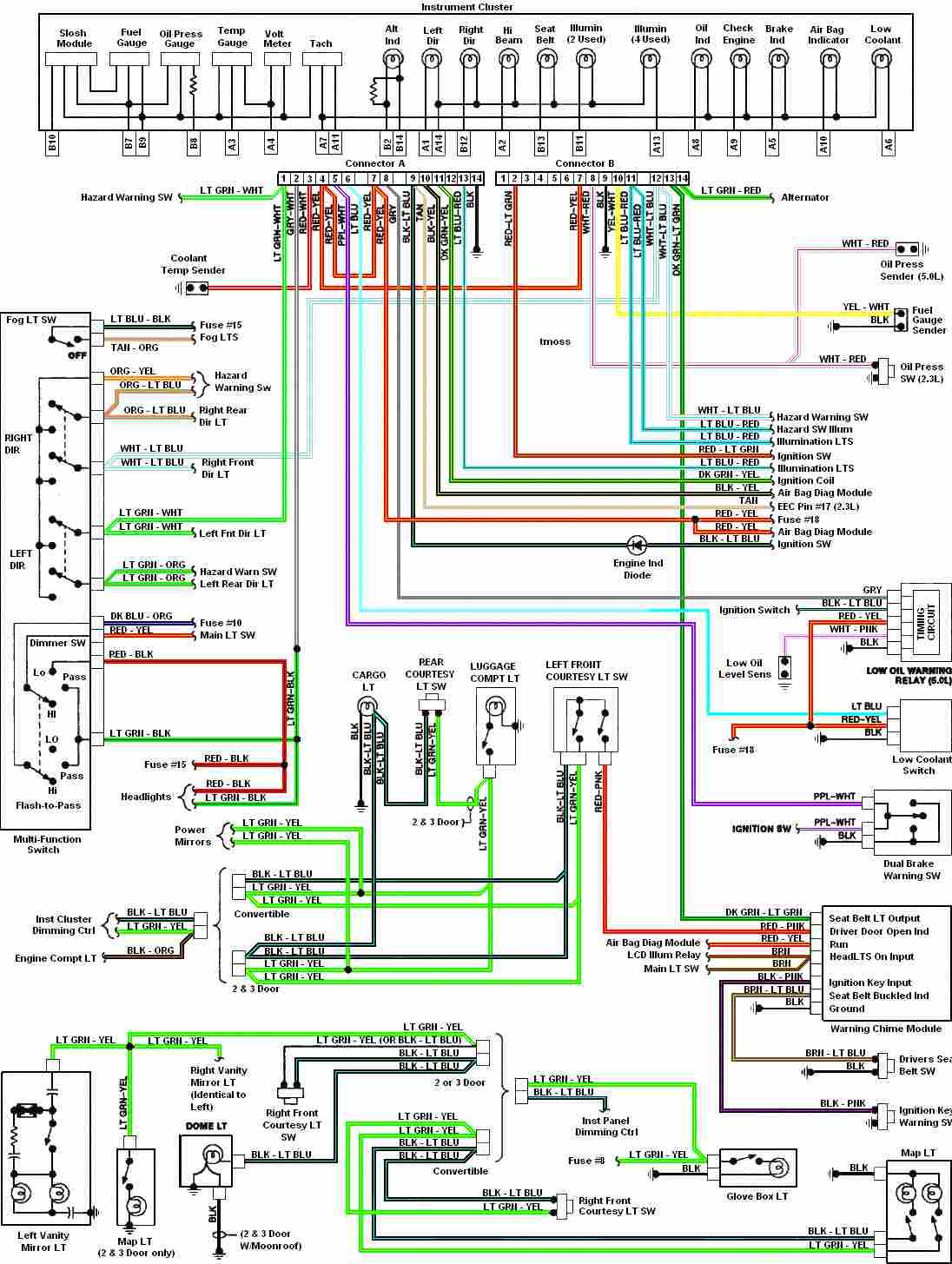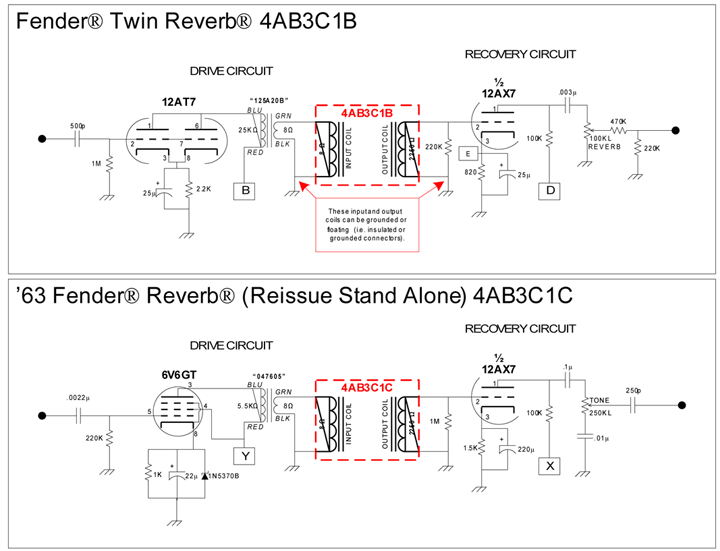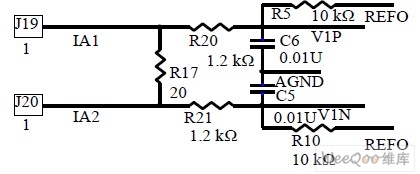
Low-Power Ring Counter (Less Than 6 Mw)
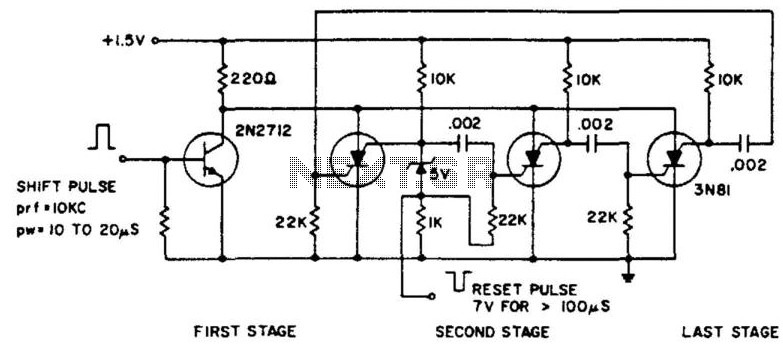
The ring counter operates from 1.0 to 6.0 V and requires only 6 mW at 1.5 V. The reset pulse activates the first stage with its trailing edge. The maximum shift pulse width increases with voltage and approaches 70 µs for a 6.0 V supply. The minimum pulse width is 10 µs.
The ring counter is a sequential digital logic circuit that consists of a series of flip-flops connected in a feedback loop. In this configuration, only one flip-flop is set to a high state (logic 1) at any given time, while all others remain in a low state (logic 0). This unique characteristic allows the ring counter to cycle through its states in a predictable manner, making it useful for various applications such as frequency division, state counting, and timing applications.
The operational voltage range of 1.0 to 6.0 V indicates that the ring counter can be powered by a variety of supply voltages, enhancing its versatility in different electronic systems. At a nominal supply voltage of 1.5 V, the circuit consumes only 6 mW of power, which is beneficial for battery-operated devices where energy efficiency is critical.
The reset pulse is a crucial control signal that initializes the counter. The trailing edge of the reset pulse is responsible for activating the first flip-flop in the sequence, ensuring that the counter begins its operation in a defined state. This feature is essential for synchronizing the counter's operation with other components in a digital system.
The timing characteristics of the ring counter are defined by the shift pulse width, which determines how long the counter remains in each state before transitioning to the next. As the supply voltage increases, the maximum shift pulse width also increases, reaching a maximum of approximately 70 µs at 6.0 V. This characteristic allows for greater flexibility in applications requiring varying timing intervals. Conversely, the minimum pulse width is specified as 10 µs, establishing a lower limit for the duration of each state transition.
In summary, the ring counter's operational parameters, including its voltage range, power consumption, reset functionality, and timing specifications, make it a valuable component in digital circuits where precise state control and efficient power usage are paramount. The ring counter operates from 1.0 to 6,0 V and requires only 6 mW at 1.5 V. The reset pulse turns on the first stage with its trailing edge. The maximum shift pulse width increases with voltage and approaches 70 jts for a 6.0-V supply. Minimum pulse width is 10uS. 🔗 External reference
The ring counter is a sequential digital logic circuit that consists of a series of flip-flops connected in a feedback loop. In this configuration, only one flip-flop is set to a high state (logic 1) at any given time, while all others remain in a low state (logic 0). This unique characteristic allows the ring counter to cycle through its states in a predictable manner, making it useful for various applications such as frequency division, state counting, and timing applications.
The operational voltage range of 1.0 to 6.0 V indicates that the ring counter can be powered by a variety of supply voltages, enhancing its versatility in different electronic systems. At a nominal supply voltage of 1.5 V, the circuit consumes only 6 mW of power, which is beneficial for battery-operated devices where energy efficiency is critical.
The reset pulse is a crucial control signal that initializes the counter. The trailing edge of the reset pulse is responsible for activating the first flip-flop in the sequence, ensuring that the counter begins its operation in a defined state. This feature is essential for synchronizing the counter's operation with other components in a digital system.
The timing characteristics of the ring counter are defined by the shift pulse width, which determines how long the counter remains in each state before transitioning to the next. As the supply voltage increases, the maximum shift pulse width also increases, reaching a maximum of approximately 70 µs at 6.0 V. This characteristic allows for greater flexibility in applications requiring varying timing intervals. Conversely, the minimum pulse width is specified as 10 µs, establishing a lower limit for the duration of each state transition.
In summary, the ring counter's operational parameters, including its voltage range, power consumption, reset functionality, and timing specifications, make it a valuable component in digital circuits where precise state control and efficient power usage are paramount. The ring counter operates from 1.0 to 6,0 V and requires only 6 mW at 1.5 V. The reset pulse turns on the first stage with its trailing edge. The maximum shift pulse width increases with voltage and approaches 70 jts for a 6.0-V supply. Minimum pulse width is 10uS. 🔗 External reference
